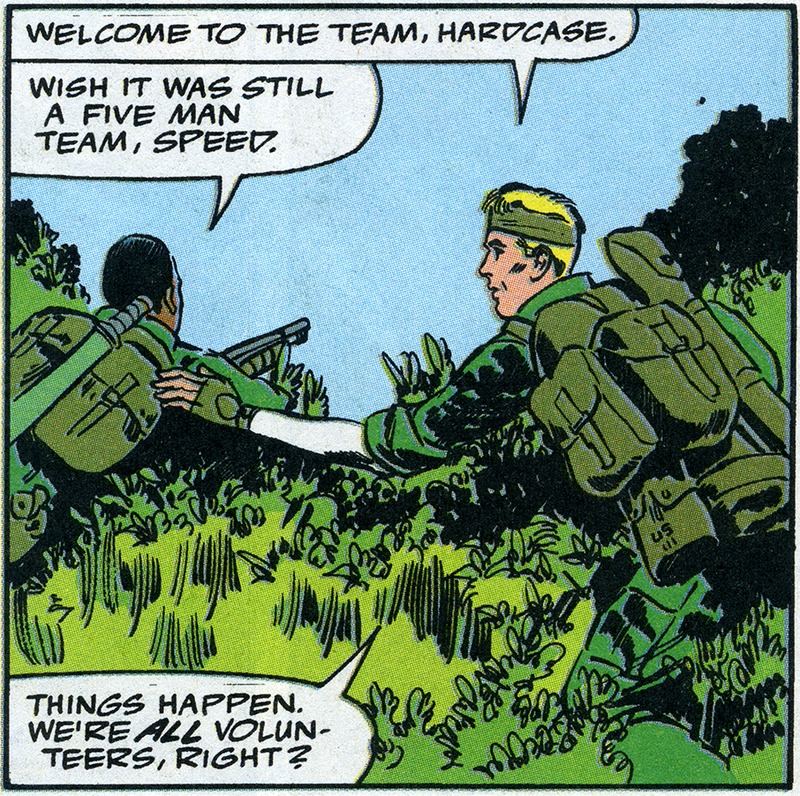In Chuck Dixon’s comic, The Nam: The Death of Joe Hallen, protagonist Joe Hallen defies the reality of most African American soldiers’ experience in the Vietnam War. In its initial phases, Marvel’s The Nam was meant to be a realist representation of the Vietnam War and the turmoil and internal conflict that arose from it (Matton 152). However, after sales of the comic fell below half of its initial printing rate, the creators adapted the story to fit more into the typical Marvel superhero narrative (Matton 160). The characters in the comic became figureheads for patriotism and American ideals, instead of mechanisms for exploring the hard truths of the US’s involvement in Vietnam (Matton 156). As the war progressed, the number of interracial conflicts increased between servicemen (Graham 63). Joe Hallen’s character fell out of favor with many readers because he contradicted this reality of tumultuous interracial relationships between black and white soldiers in the war.
This contradiction is evident from the beginning of Hallen’s deployment. After he is introduced to his fellow soldiers, Hallen immediately incurs opposition by being the only African American in the predominantly white platoon. However, he does not allow their discrimination to stop him from trying to integrate into the platoon community. He continues to assert his position as an equal part of the platoon even though his white platoon members do not accept him. In reality, asserting his value in the platoon would have labeled him as a “Black Power GI” for promoting equality between him and his white platoon members (Graham 98). Additionally, black soldiers encountered racism on the frontlines of combat when their superior officers assigned them the most dangerous jobs (Graham 92). Hallen is not given many dangerous tasks, again showing how he is able to avoid the harsher realities of the color line in combat.
His placement and function in his platoon are soon validated in Issue 55 when he alerts everyone to an imminent attack. The image of his platoon member, Gunny, accepting him a part of the crew is a culmination of Hallen’s experience as an exception to most African American soldiers’ experiences. Openly protecting his white counterparts and killing their mutual enemy allows them to accept him as a soldier. The concluding summation by Gunny, “We’re all volunteers, right?” accesses the larger exterior rationale that if Joe can volunteer to sacrifice his own life for those of his platoon members, then he is worthy of their respect as an equal. This narrative of interracial brotherhood on the frontlines was a privileged experience that black soldiers did not always experience. Had Joe Hallen’s character survived his story arc to go on to a second tour of duty, he would have surpassed the staggering statistics of disproportionate black casualties (Graham 22). Though Hallen’s exceptionalist narrative creates a harmonious bond between black and white comrades in arm, it is ultimately not enough to save his character from the fate of most black men in the Vietnam War.
